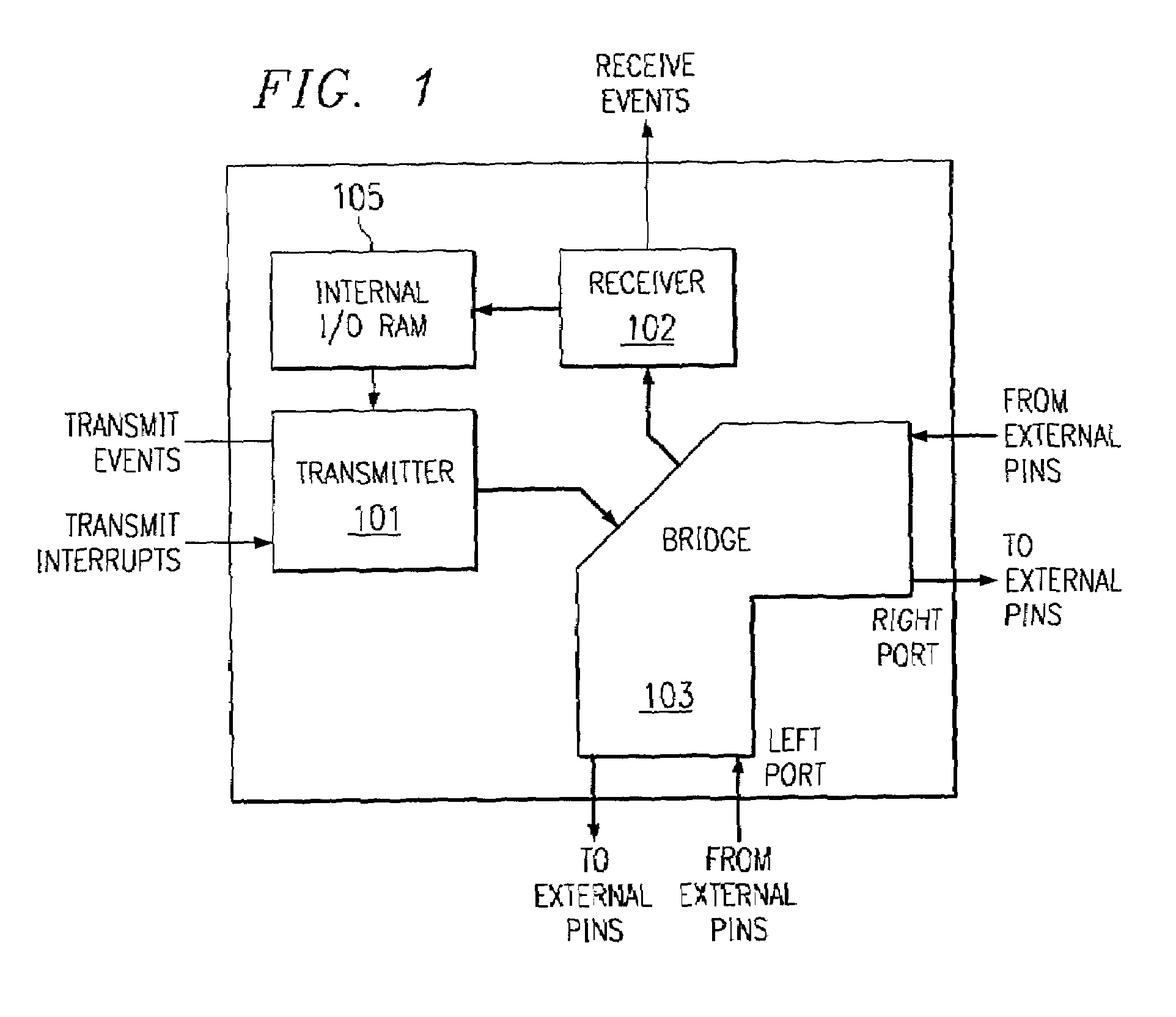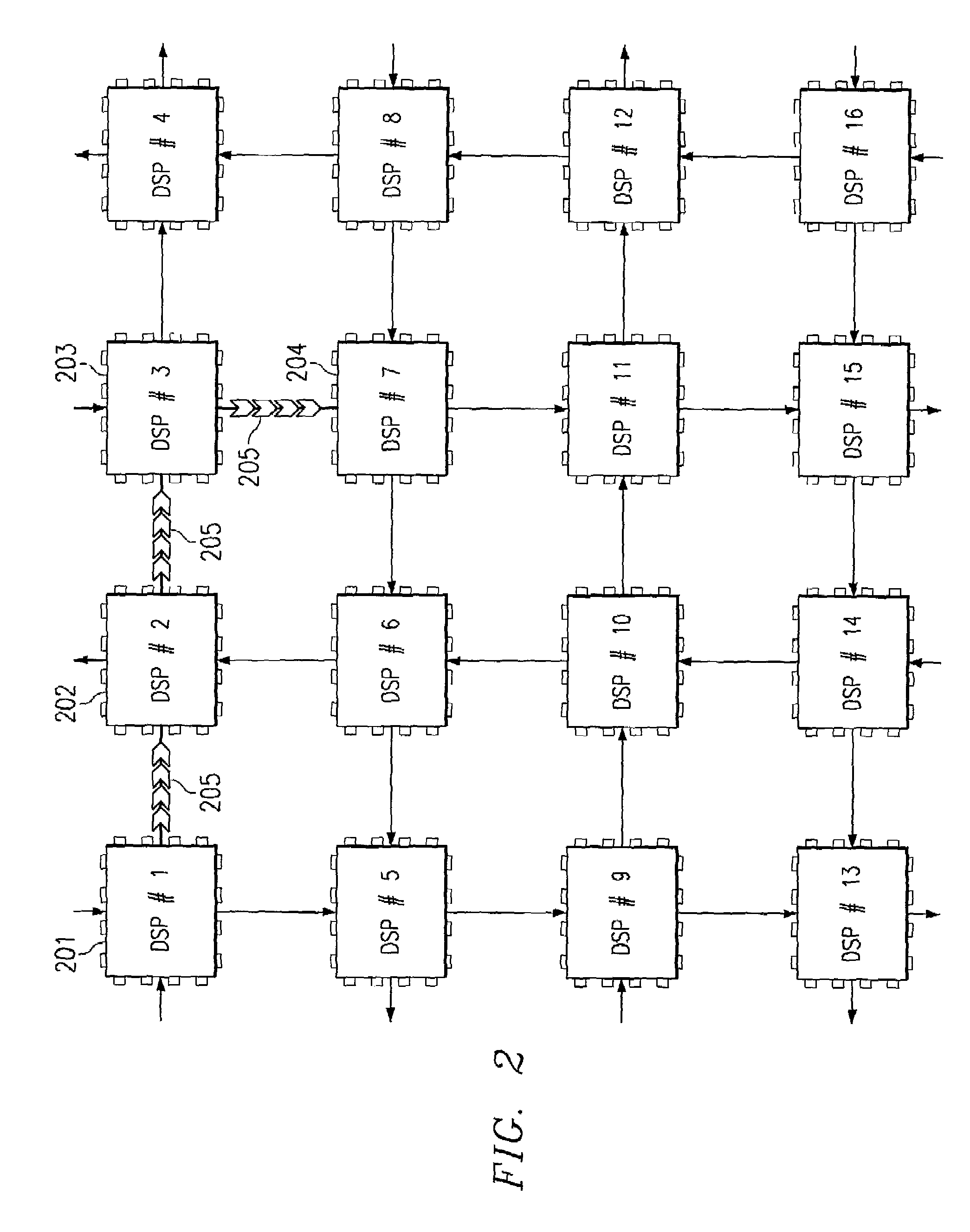Datapipe routing bridge
a datapipe and routing bridge technology, applied in data switching networks, multiplex communication, instruments, etc., can solve the problems of reducing the number of external pins/components and the complexity of operation, and the limitation of the number of processors that can be connected together, so as to reduce the number of external pins, improve the inter-processor traffic management, and remove the limitation of how many processors can be connected together
- Summary
- Abstract
- Description
- Claims
- Application Information
AI Technical Summary
Benefits of technology
Problems solved by technology
Method used
Image
Examples
Embodiment Construction
[0041]This application uses the descriptive name datapipe routing bridge or simply datapipe to describe a packet based communications peripheral connecting multiple processors without glue logic or CPU intervention. FIG. 1 illustrates the makeup of a datapipe. It is composed of three building blocks transmitter 101, bridge 103 and receiver 102. The main function of the bridge component is to provide high levels of connectivity between multiple digital signal processors without paying the penalties usually associated with inter-processor connections. Dedicated routing logic within the datapipe autonomously navigates data packets of programmable size along the shortest distance from the source processor to one or more destination processors. Transmitter 101 may transmit data packets via bridge 103 to one or both of the right and left ports. Transmitter 101 responds to transmit events and transmit interrupts from an associated data processor (not shown) to supply data from internal I / O...
PUM
 Login to View More
Login to View More Abstract
Description
Claims
Application Information
 Login to View More
Login to View More - R&D
- Intellectual Property
- Life Sciences
- Materials
- Tech Scout
- Unparalleled Data Quality
- Higher Quality Content
- 60% Fewer Hallucinations
Browse by: Latest US Patents, China's latest patents, Technical Efficacy Thesaurus, Application Domain, Technology Topic, Popular Technical Reports.
© 2025 PatSnap. All rights reserved.Legal|Privacy policy|Modern Slavery Act Transparency Statement|Sitemap|About US| Contact US: help@patsnap.com



